#shipbuilders
Text
Did you know that Damian Lewis' great-grandfather, Alfred Yarrow, was a renowned British shipbuilder and existed almost in the same era as Lewis Nixon the shipbuilder? They must have had some interaction right?



32 notes
·
View notes
Text
one of the things I love about Water 7 is how they’re all like “We fought in the past, but that’s behind us. Now we’re united by a common enemy. We’ll fight together as friends!” and the common enemy in question is the CIA
#One Piece#The allies fighting against the CIA are as follows:#Pirates (makes sense)#Criminal gang (makes sense)#Shipbuilders#The esteemed mayor of one piece Venice#Alcoholic train conductor grandma with shark teeth#8 year old and her pet rabbit
12 notes
·
View notes
Text

"Les chantiers maritimes canadiens occupés à récupérer les cargaisons coulées," Montral-Matin. July 24, 1943. Page 9 & 10.
---
Les scaphandriers doivent accomplir là une des plus dures taches de la guerre
0 notes
Text
The Evolution of the Portable Toilet
I've always been fascinated by the humble portable toilet. It's such a simple invention, but it's played a vital role in our society for decades. I mean, where would we be without them at concerts, sporting events, and construction sites?
But where did portable toilets come from? And how have they evolved over the years?
It all started in the 1940s, during World War II. Shipbuilders in California were looking for a way to provide temporary toilets for their workers. The solution they came up with was a wooden cabana with a small holding tank. This was the first portable toilet, and it was a huge improvement over the outhouses that were previously used.
In the following decades, portable toilets continued to evolve. They became made of lighter materials, like fiberglass and plastic, which made them easier to transport. They also became more comfortable and sanitary, with features like flush toilets and hand sanitizer dispensers.

Today, portable toilets are used in a wide variety of settings. They're not just for construction sites and concerts anymore. You can find them at festivals, sporting events, fairs, and even weddings.
And the evolution of the portable toilet is not over yet. There are new innovations being developed all the time, like solar-powered toilets and self-cleaning toilets. It will be interesting to see what the future holds for these humble but essential fixtures.
I'm glad I had the chance to learn about the evolution of the portable toilet. It's a fascinating story, and it's amazing to think about how far these simple inventions have come.
0 notes
Text
Silm time travel fixit fic where Curufin is spat out into his younger self fairly early in YoT, and when his efforts to solve the Noldor's political/ Melkor problems bear no fruit... he just fucks off to Alqualonde to apprentice as a ship-builder, because it's a concrete and fixable future problem.
#tolkien#san shoots the breeze#He does his damnedest to single-handedly build a fleet for the noldor#To feanor's proud bemusement (feanor sees no need to rush! But curufin's faith in his plans to leave is touching)#If he's spat out late he goes to learn shipbuilding early. Less time to influence events but plenty of time to circumvent Doom#He takes it up with a strong spirit of malicious compliance. He's sure the valar *want* to damn them and he'll make sure they have no excus
377 notes
·
View notes
Text
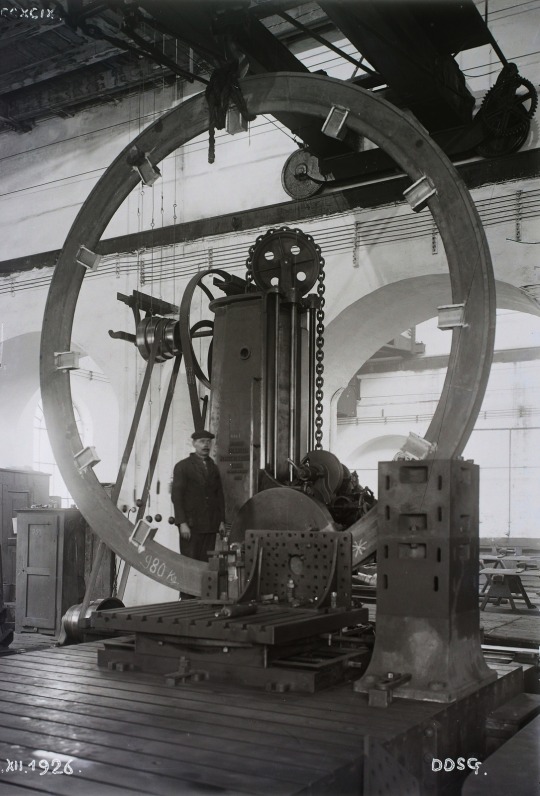
Óbuda Shipyard machine shop, 1926. From the Budapest Municipal Photography Company archive.
194 notes
·
View notes
Text
Today's manuscript is LJS 473, a 15th century Italian treatise on ships and shipbuilding. It includes information on cartography, construction and use of the compass, types of ships, and meteorology and astronomy for use in navigation, and has two maps of the earth - one of the earth and the spheres surrounding it (representing the sky and the Zodiac), and the other that divides the earth into temperate zones (hotter around the middle and colder on the ends).
🔗:
#medieval#renaissance#manuscript#ships#shipbuilding#nautical#illustration#illumination#illuminated manuscript#15th century#italian#italy#book history#rare books
394 notes
·
View notes
Text

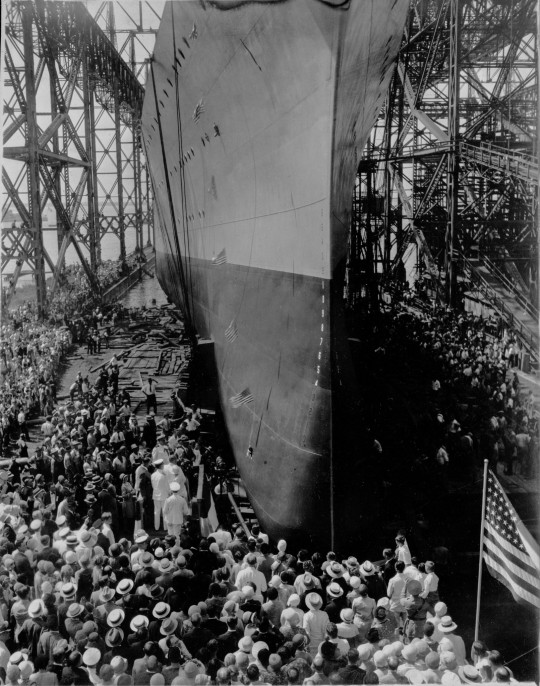
Launch ceremony for USS Houston (CA-30) at the Newport News Shipyard.

She was sponsored by Elisabeth Holcombe. In attendance is Mary Ellen Bute (maid of honor) and Charlotte Williams (special guest).
Date: September 7, 1929
Naval History and Heritage Command: 19-LC-44089
University of Houston Library: uhlib_1981_001_do8873pz043_0001_ac, uhlib_1981_001_do8873pz03r_0001_ac, uhlib_1981_001_do11268387w_0001_ac, uhlib_1981_001_do6040xr43k_0001_ac, uhlib_1981_001_do84988k149_0001_ac
#USS Houston (CA-30)#USS Houston#Northampton Class#Cruiser#Warship#Ship#United States Navy#U.S. Navy#US Navy#USN#Navy#Newport News Shipbuilding Co#Newport News#Virginia#East Coast#launch#ship construction#September#1929#interwar period#my post
26 notes
·
View notes
Text







Donald McKay – Scientist of the Day
Donald McKay, a Canadian/American shipbuilder, died Sep. 20, 1880, at age 70.
read more...
#Donald McKay#shipbuilding#clipper ships#naval engineering#histsci#histSTM#19th century#history of science#Ashworth#Scientist of the Day
26 notes
·
View notes
Text
Insufferable
"You should not hold it so," says a voice at Círdan's back. "Here, let me show you."
Círdan grimaces. Footsteps follow, soft and precise as a dancer's. Daeron does dance, of course, and well, though the nimbleness of his feet is nothing to the splendour of his voice.
Such a voice.
How can such a voice, the very beauty of the world bodied forth in sound, yet speak with such haughty airs and rouse such rancour in Círdan's heart?
"Please, minstrel," says Círdan, withdrawing his chisel from Daeron's grasping hand. "Keep to your craft and I will keep to mine.”
A drabble for @sindarweek, inspired by the S02E02 Daeron name-drop in Rings of Power. On AO3.
#rings of power#trop fic#daeron#cirdan#my fic#drabble#I do in fact headcanon Daeron had some skill in woodworking#but he's no Shipbuilder the Shipbuilder
23 notes
·
View notes
Text

Adam Kennedy (British, 1988), Dry Dock Construction. Mixed media on canvas, 88 x 127 cm. The Fleming Collection, London
130 notes
·
View notes
Text

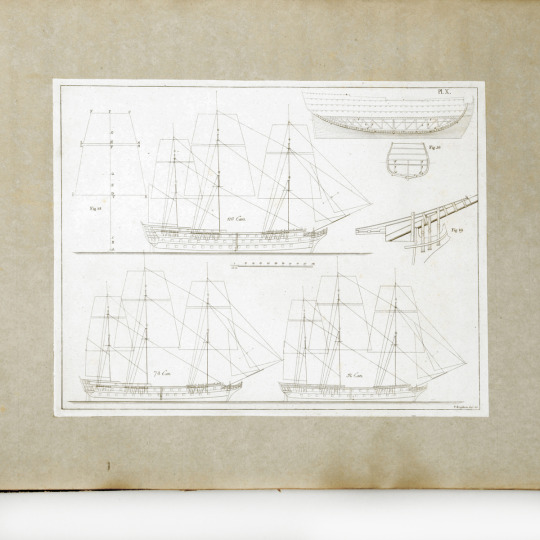
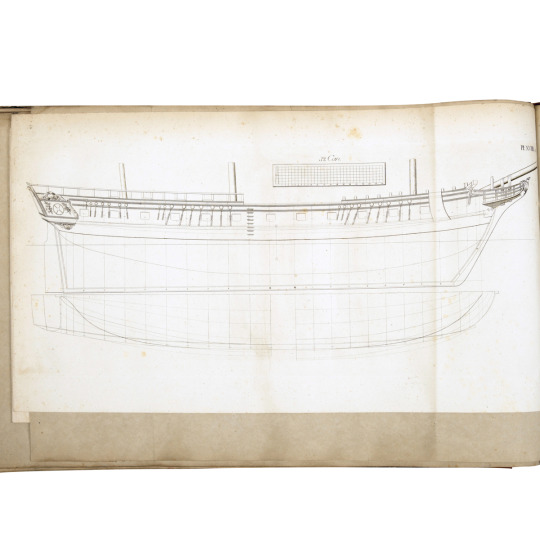
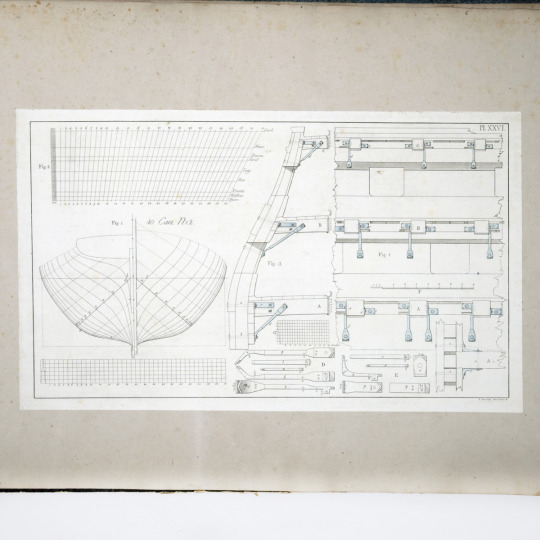
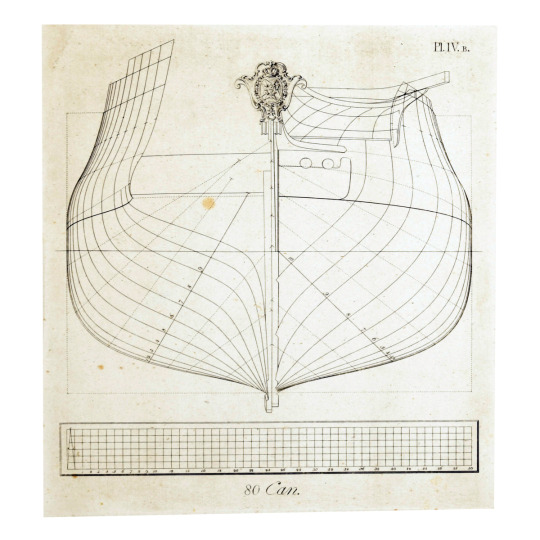
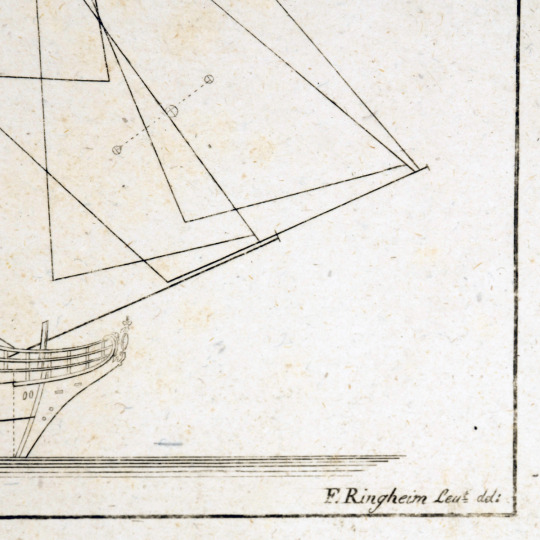
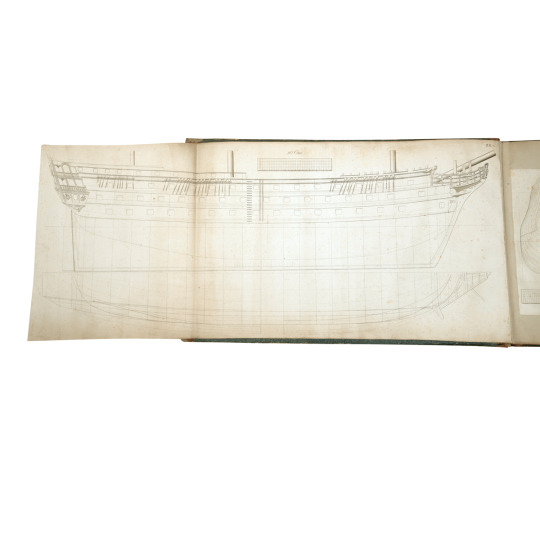


Naval Architecture War Vessels, by Frederick Chapman, c. 1770
Frederick Henry Chapman (1721-1808) was a Swedish shipbuilder, scientist, naval officer and manager of the Karlskrona shipyard for 11 years. Enjoying considerable support from King Gustav III, he is deemed to be first person to apply scientific methods to shipbuilding and his books ‘Architectura Navalis Mercatoria’ (1768) ,and ‘Treatise on Shipbuilding’ (1775) are considered to be pioneering works. They were intended for an international audience, available with text and measurements in Swedish, French and English. His work had a huge influence on international shipbuilding and designs of that time.
96 notes
·
View notes
Text
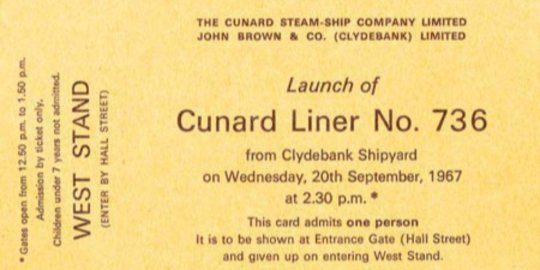
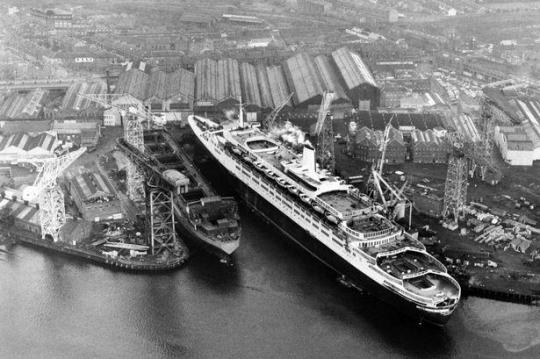
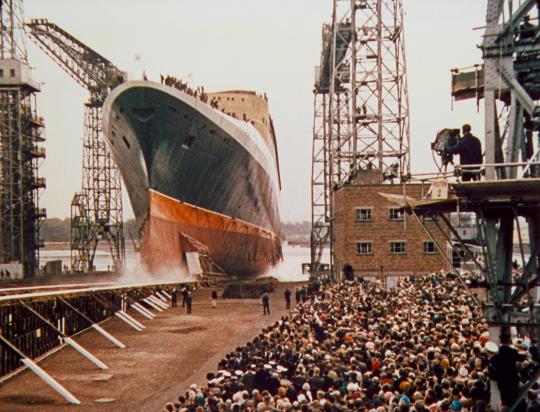

On 20th September, 1967, the QE2 launched from John Brown’s yard in Clydebank.
By the end of the 1950s, discussion over the replacement of the Queen Mary and Queen Elizabeth was taking place. The decision to replace the ‘Queens’ was deemed to be of national importance and as such a special committee, known as the Chandos Committee was created to advise the Government and to determine whether such a project was economically viable. Originally Cunard had wanted to build two new liners with the help of a Government subsidy, however the committee’s report proposed that the Government loan Cunard £18 million towards the construction of one vessel. The project became known as ‘Q3’ and six British shipyards were asked to tender – this prestigious project was a huge opportunity for home based shipbuilders to construct a transatlantic liner.
The new ship, code-named was built by John Brown & Company Ltd, Clydebank (later Upper Clyde Shipbuilders Ltd) and scheduled for May 1968. On 20th September 1967 the keel was launched by Queen Elizabeth II and the ship was named Queen Elizabeth 2. She was the last Atlantic Ocean Liner of it’s kind to be built in the UK.
QE2’s maiden transatlantic crossing set sail on 2 May 1969. She was well received by the American public, and became a profitable ship in her early years of service. During her first season, Cunard were able to repay £2.5 million of the Government loan. Her dual purpose design had allowed QE2 to thrive where her transatlantic counterparts could not.
In January 1971 while cruising in the Caribbean, QE2 received a distress call from the French liner Antilles. Antilles had run aground off the coast of Mustique in the Grenadines and caught fire. Being a fast ship in close proximity to the Antilles, QE2 went to her assistance.
However, by the time the QE2 arrived the passengers had been taken ashore. Antilles passengers and crew were brought aboard QE2 and taken to Barbados. As a testament to the quality of service offered aboard QE2, some of the Antille’s passengers booked subsequent cruises on the Cunarder.
In May 1972, while at sea during a transatlantic crossing, Captain William Law received notification that there was a bomb aboard QE2. Cunard took this threat very seriously and alerted the British Government who sent a bomb disposal unit out to the ship. Bomb disposal experts parachuted into the sea close to the ship and were brought aboard by QE2’s tenders. After a full sweep of the ship, the all clear was given as it turned out to be a hoax.
Later the FBI arrested the culprit for making similar threats against Pan American Airways. The bomb disposal teams were awarded the Queen’s Commendation for Brave Conduct.
As QE2’s cruising popularity increased and in response to the ongoing decline in shipping traffic on the North Atlantic, Cunard reduced the number of transatlantic crossings that QE2 took. The company maintained a strong summer presence on the Atlantic, however shifted the focus for the ship towards cruising. This saw QE2 undertake her first world cruise, an event that was well received – QE2 undertook a further 25 world cruises during her career.
Queen Elizabeth 2 was retired from active Cunard service in November 2008. She had been acquired by the private equity arm of Dubai World, which planned to begin conversion of the vessel to a 500-room floating hotel moored at the Palm Jumeirah, Dubai.
Following a multi-million-dollar investment programme, the 13-deck ship has been restored to her former glory and today serves as a world-class entertainment, tourism, hotel and dining destination in Dubai.
14 notes
·
View notes
Text

"La campagne pour l'emprunt chez Morton," Le Soleil. May 6, 1943. Page 3.
---
Un ralliement en faveur du 4e emprunt de la Victoire a été tenu hier aux chantiers maritimes Morton. Dans la photo du haut, les membres du comité et les directeurs de l'entreprise; dans la photo du bas, la foule des ouvriers.
#ville de québec#morton#shipbuilders#shipbuilding#shipyards#mass rally#working class culture#corporate charity#victory bonds#victory bond campaign#canada during world war 2
0 notes
Text
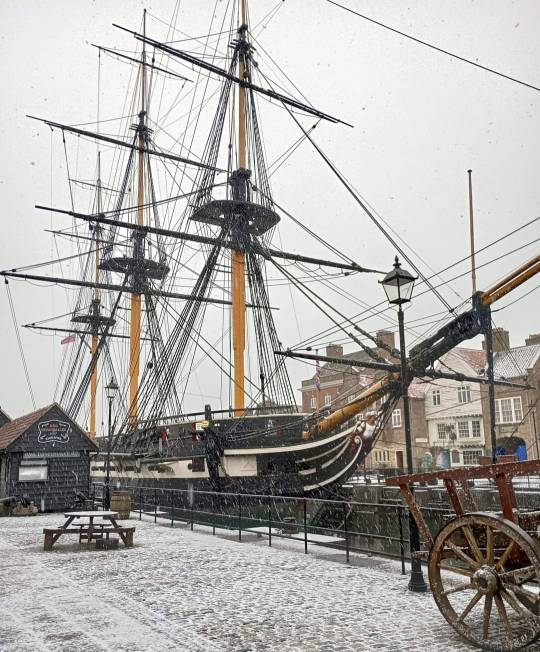
HMS Trincomalee, at the National Museum of the Royal Navy, Hartlepool.
A Leda-class frigate like HMS Shannon, she was built in Mumbai (Bombay) by master shipbuilder Jamsetjee Bomanjee Wadia, who lived c. 1754-1821 (Wikimedia Commons).

It was Wadia who ceremonially hammered a silver nail into Trincomalee's keel, following Parsi Zoroastrian tradition. I'm fascinated by the melding of global maritime traditions.
#hms trincomalee#age of sail#royal navy#naval history#jamsetjee bomanjee wadia#yeah i'm going to mention shannon every time i bring up a sister ship#maritime history#we rightly condemn imperialism but empire by its definition combines different cultures#i love the shipbuilder's portrait#the sea
53 notes
·
View notes
Text
19 notes
·
View notes